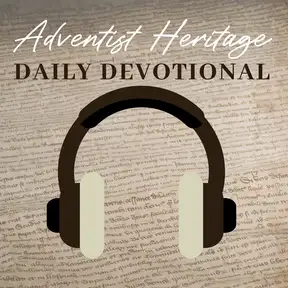The tent of fire
Megan Skene: In the early days of the
Adventist movement, the leaders weren't
just seasoned preachers or church elders.
They were young, sometimes
barely out of their teens.
They preached in tents, sang
in choirs, printed tracks, and
carried books from town to town.
They didn't wait to be
asked or to feel ready.
They just believed and their faith lit.
A fire that changed the world.
In the mid 18 hundreds, revival was
sweeping across the United States.
Across small towns and big cities,
people packed into canvas tents to
hear preaching about Bible prophecy,
the second coming and the Sabbath.
It wasn't just religion,
it was a movement.
And under those tents you didn't
have to look for a church, you
just had to follow the music.
And what's easy to forget is that so many
of the people leading the way we young.
Let's go back to one of those tents.
The wind is snapping at the canvas.
There's a buzz in the air.
Dozens, sometimes hundreds of people
are packed into folding chairs,
listening as a young man, maybe
barely 20 stands at the pulpit.
His preaching with conviction
about hope, prophecy, and
Jesus's soon return behind him.
A group of young women lead hymns
with harmonies that carry outside
the tent and into the night.
They're not just waiting to be asked.
They're not waiting to be ordained.
They're not waiting
until they know enough.
They just believe, they
show up and they serve.
One of the most powerful voices
in the early advent movement was a
17-year-old girl named Ellen Harmon
when the great disappointment hit, she
was just a teenager, brokenhearted,
but still faithful and not long
after she received her first vision.
That vision helped guide the
movement forward When most
people had lost direction, she
didn't think she was qualified.
She didn't even want the role.
She said yes to God and
that yes, shaped history.
Another young leader
was John Nevins Andrews.
He became the Adventist Church's first
official missionary to Europe at just 36.
, But he had been active in ministry
and writing since his teens.
He was studying prophecy editing
publications . And speaking at
gatherings when most young adults today
are still figuring out their path.
And then there were the canvases.
Young men and women, often just
18 or 19, traveling from town to
town with books in their bags.
They sold literature about
health Jesus and the Sabbath.
Many walked, miles, slept
rough, faced rejection, but
they believed in the mission.
And let's not forget the musicians,
the tent meetings were full of
life, not just sermons, but music.
It was young people who carried
the harmonies, led the choirs,
and played the instruments.
They weren't background noise.
They were part of the message.
Worship was part of the movement.
What made this generation so bold?
They didn't have much, most
had no formal education.
They didn't come from wealth or power.
Some were still grieving the
great disappointment, but
they had something bigger.
Conviction, courage, and a vision
of what the church could be.
They weren't just talking about
truth, they were living it, sharing
it, publishing it, singing it.
They raised up churches,
schools, and sanitariums.
They planted the seeds of what
would become a global denomination.
And here's the thing.
Church may not be in a canvas tent
anymore, but people are still searching
for truth, still needing hope.
So here's the question.
What if you are the one to carry it?
Now, you don't need a stage.
You don't need a theology degree.
You don't need to be asked.
You just need a willing heart, a steady
hand, and a voice that says, I'll show up.
. Because the fire that lit the
movement still burns and it's looking
for new lamps to carry the flame.
Episode five, the Tender
Fire Read by Megan Skene.

